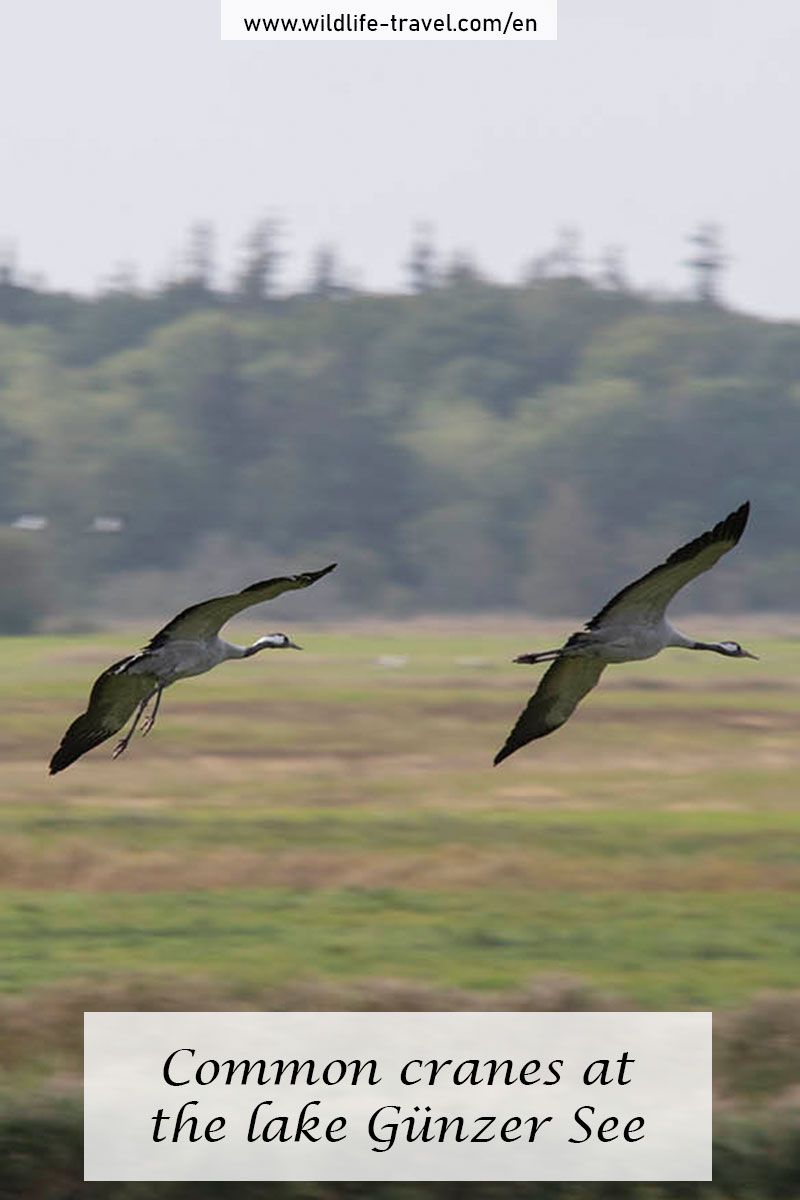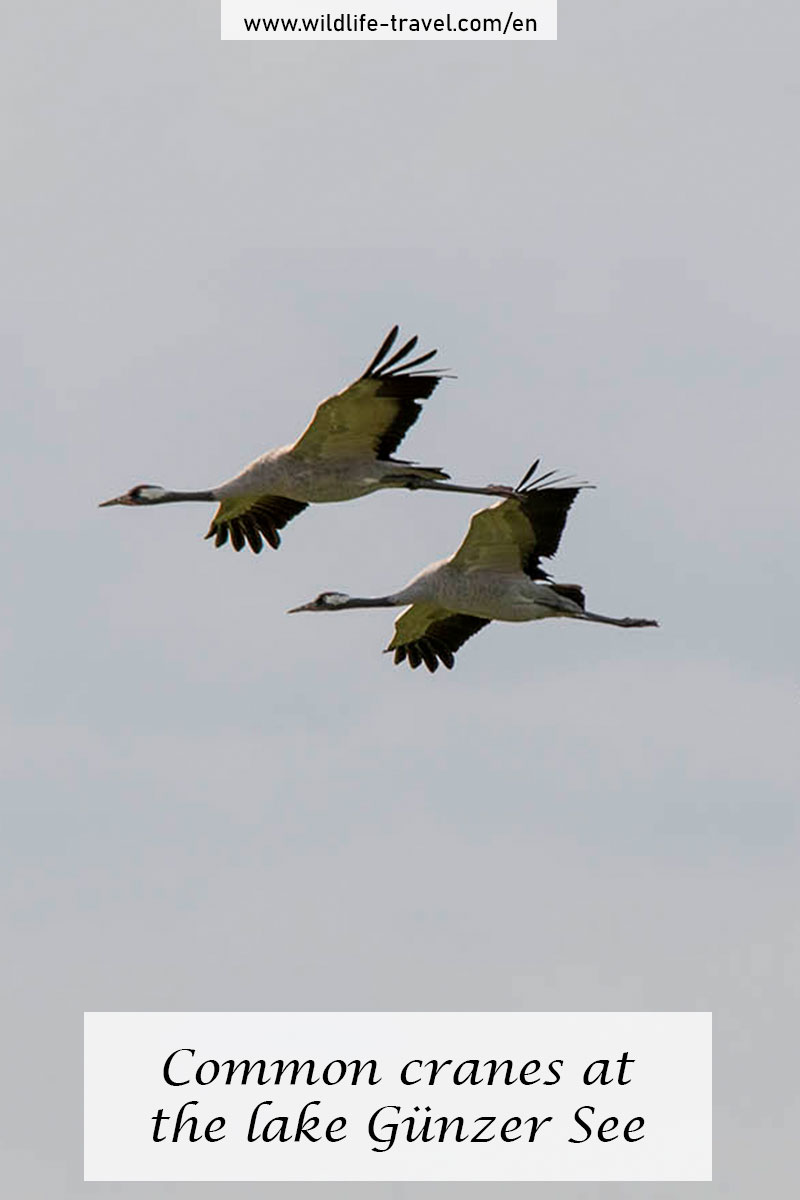The Kranorama (or Crane Center in English) is a crane watching observation center at the lake Günzer See and located in the north of Mecklenburg Western-Pomerania. The Crane Center Kranorama is probably one of the best places where you can observe cranes from close up during the day. In this blog entry I tell you more about the Kranorama and the cranes around.
The Kranorama
There are many and different ways to become witness of one of the most wonderful bird spectacle in Germany: the crane migration. Be it on a boat tour on the peninsula Fischland-Darß-Zingst at sunset. Or during a cycling tour on a beautiful day in autumn in Linum. Although there are many places in Germany where you can observe cranes, sometimes a crane watching trip might end unsuccessful without having seen any crane. However, there is one place in North Germany, where there are really good chances to see several cranes in one spot. And that is at the Kranorama.
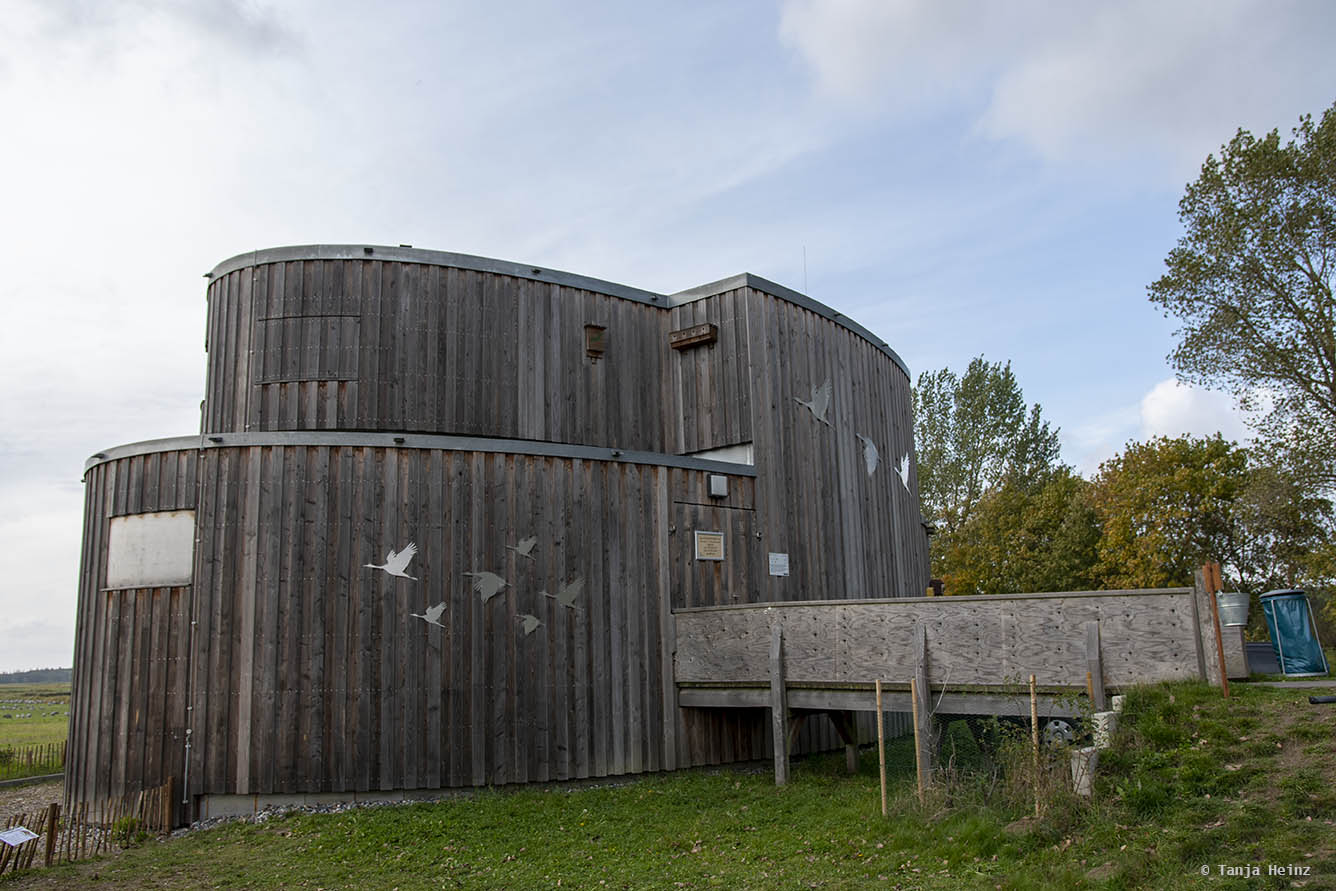
The Kranorama is also known as the Crane Center and located at the lake Günzer See in the state Mecklenburg-Western Pomerania. In autumn the region becomes a popular place not only for common cranes, but also for many crane watchers like me.
I visited the Kranorama in autumn on one day at the beginning of October.
The Kranorama opened for the first time on the 15th of October in 2015, and since then, it became known as a great crane watching place among many birders.
The Kranorama is run by the national working group "Kranichschutz Deutschland" (English: Crane Conservation Germany) which is organized in several state working groups like, for example, the ones in Mecklenburg Western-Pomerania, Brandenburg or Lower Saxony.
Crane Conservation Germany is a non-profit company with the German NGO Nature and Biodiversity Conservation Union (NABU) as the only shareholder since 2017. The aim of Crane Conservation Germany is to create and provide secure and undisturbed breeding and roosting sites for common cranes in order to bring forward the conservation of these birds in Germany.

As the common crane (Grus grus) is a migratory bird, the conservation of these birds is especially challenging, as international laws and conventions are necessary to protect these birds.
Did you know? In Germany it is prohibited to enter breeding territories, staging and roost sites of cranes according to the Federal Law on Nature Conservation. If you want to observe cranes, you can watch them along roads or country lanes. But be aware, do not disturb the birds!
If you visit the Kranorama you can observe common cranes from a close distance. This is very special, as common cranes are very shy birds. At the Kranorama you can feel almost like an inconspicuous observer. Crane Conservation Germany is trying to reduce disturbance, for example, by planting hedgerows or by minimizing eutrophication and pesticide input in the area.
Nevertheless, the Kranorama is open on almost every day in spring and autumn. Please check the official website of the Kranorama to know more about the current opening hours.
You can arrive by car, but as far as I know there is no public transport to the Kranorama. I visited the Kranorama by bike.
If you enter the road to the Kranorama, you will find several signs with information about cranes.

If you want to know more about common cranes at the lake Günzer See you can also visit the NABU Crane Center in Groß Mohrdorf. At this Crane Center you will find a permanent exhibition about common cranes, but also more information about where to observe cranes and how to book a guided tour at the Kranorama. Please check the official website for more information.
Crane watching at the lake Günzer See
The Kranorama is just next to the lake Günzer See and situated in the middle of an important migration route of common cranes. Together with the Darß-Zingst Bodden chain and the western part of the island Rügen, which both belong to the Western Pomerania Lagoon Area National Park (German: Nationalpark Vorpommersche Boddenlandschaft), the region around the lake Günzer See provides many staging and roosting sites for common cranes in Central Europe.

In 2019 more than 85.000 common cranes were counted in this area at the beginning of October. In no other region stayed so many common cranes in Germany during this time although Linum in the Rhin-Havelluch in Brandenburg with almost 80.000 common cranes and the Diepholz Moor Depression in Lower Saxony with more than 40.000 common cranes are other popular staging sites for these birds in October.
At the Kranorama and the lake Günzer See you will get some spectacular views of many, many common cranes.
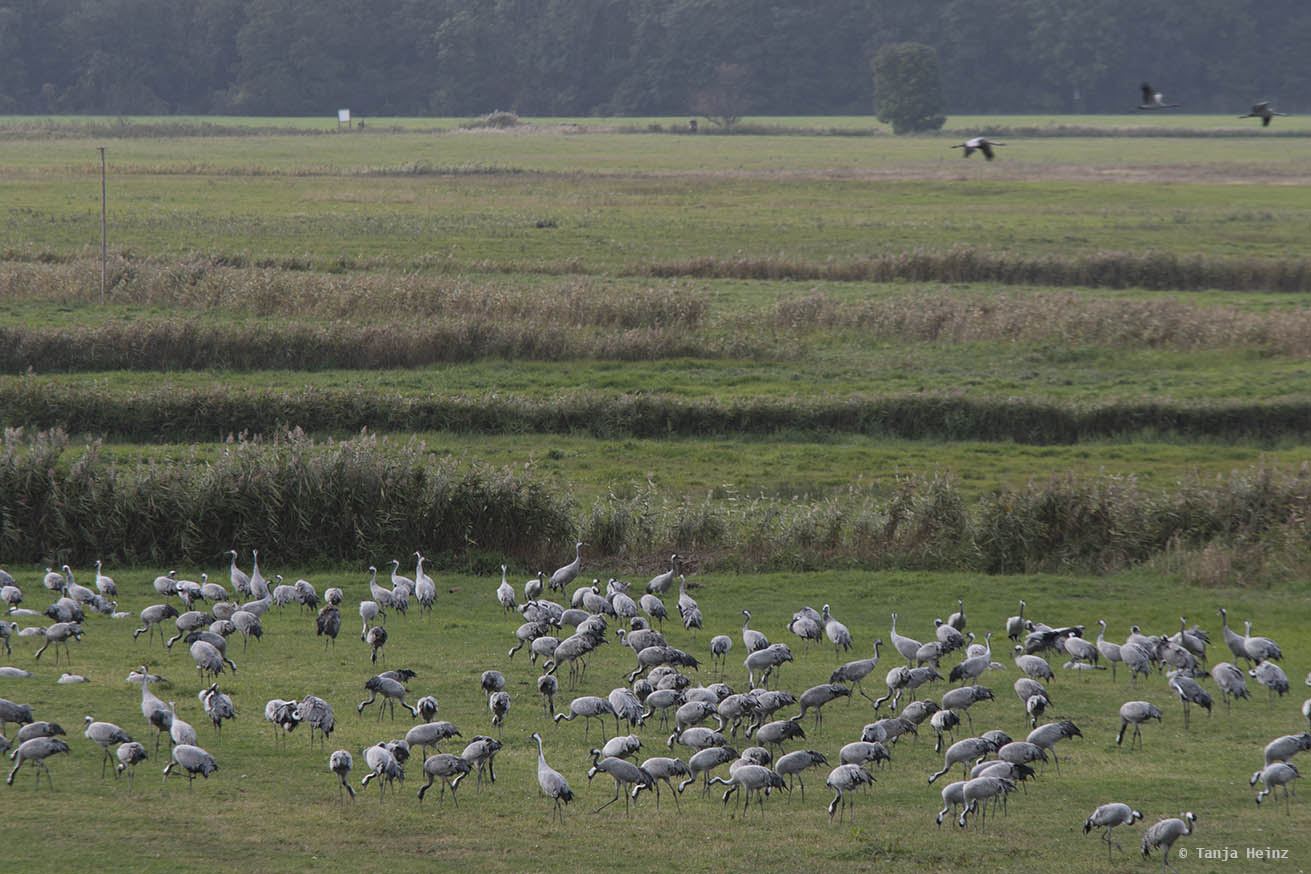
I have visited the Kranorama on a windy day in October. It was cloudy and cold, but the weather was calm enough so that I could quietly observe common cranes flying in to their staging site just in front of the Kranorama and next to the lake Günzer See.
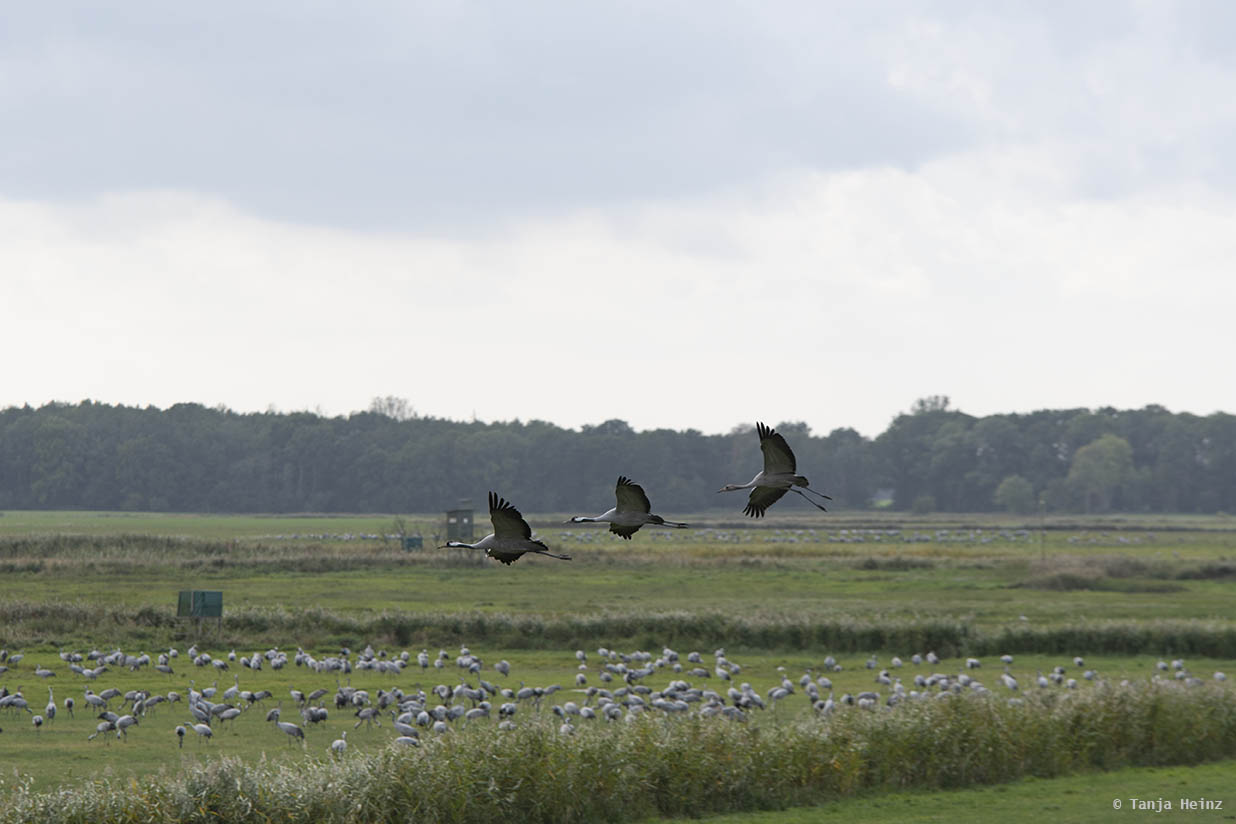
Apparently, in spring (March and April) it is possible to observe cranes at the lake Günzer See showing off their famous dance. The crane dance is characterized by jumps and bows, wing beatings and zigzag runs. Sometimes they run in circles and might even throw plants or stones into the air. With luck you can even watch a whole crane ballet when several cranes start to dance together.
The dance is an expression of inner excitement. Common cranes dance in particular in spring. With a little bit of luck it is possible to observe cranes dancing even in autumn.
As I have visited the Kranorama in October, I was not lucky enough to see common cranes dancing. However, in one occasion I thought to see two cranes showing off some dance positions.
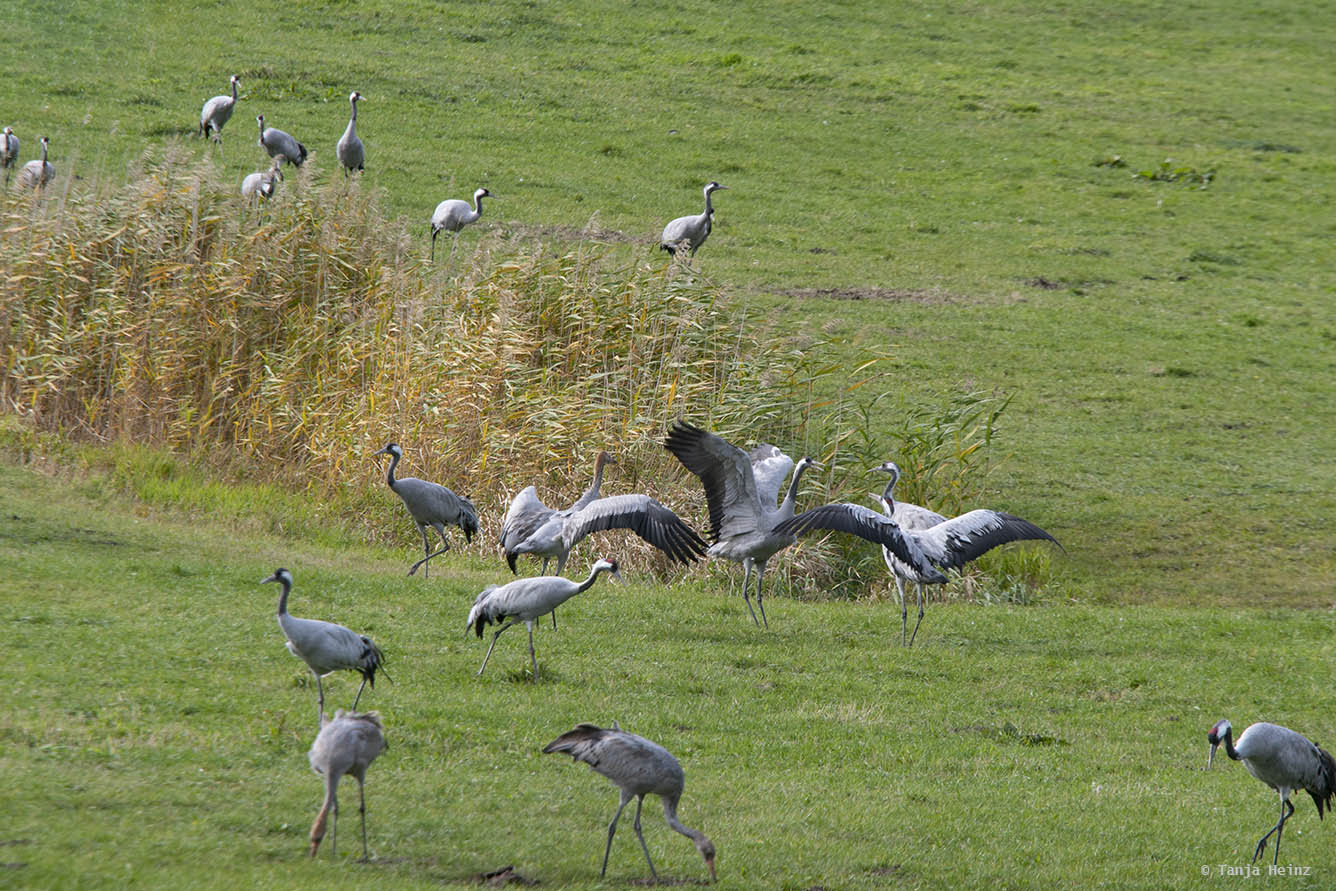
Nevertheless, Mecklenburg Western-Pomerania is a popular region for common cranes on their migration route, as in this region they find enough food, that means, freshly drilled winter seeds on fields. However, in order to avoid conflicts with farmers, the NABU-Crane Center established artificial feeding sites in order to avoid damaged crops, and simultaneously, guarantee that common cranes gain enough energy to continue with their migration.
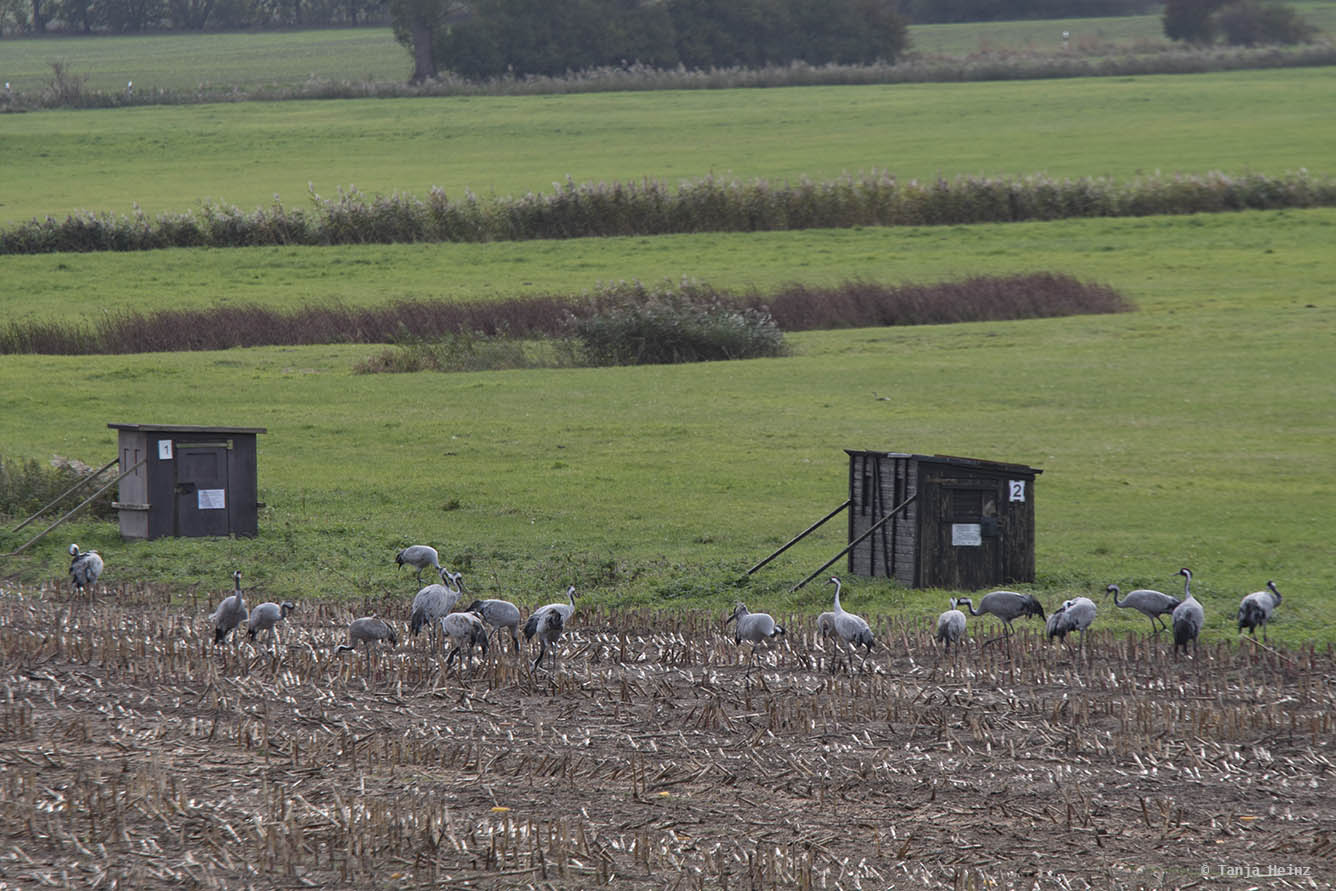
But this is not the only conservation effort undertaken for these birds. Common cranes also receive tags on their legs. That means, they receive plastic and/or metal rings which act like personal IDs. With these rings, an individual crane can be recognized by the tag on its leg.
These tags are necessary to learn more about their behavior. The more we know about them, the better we can protect them.
Information: If you see a common crane with a tag, you can send the information to the Crane Center via email to ring@kraniche.de or enter the data on the website www.icora.de.
I saw many common cranes on that day in flight, however, I couldn’t see any tag.
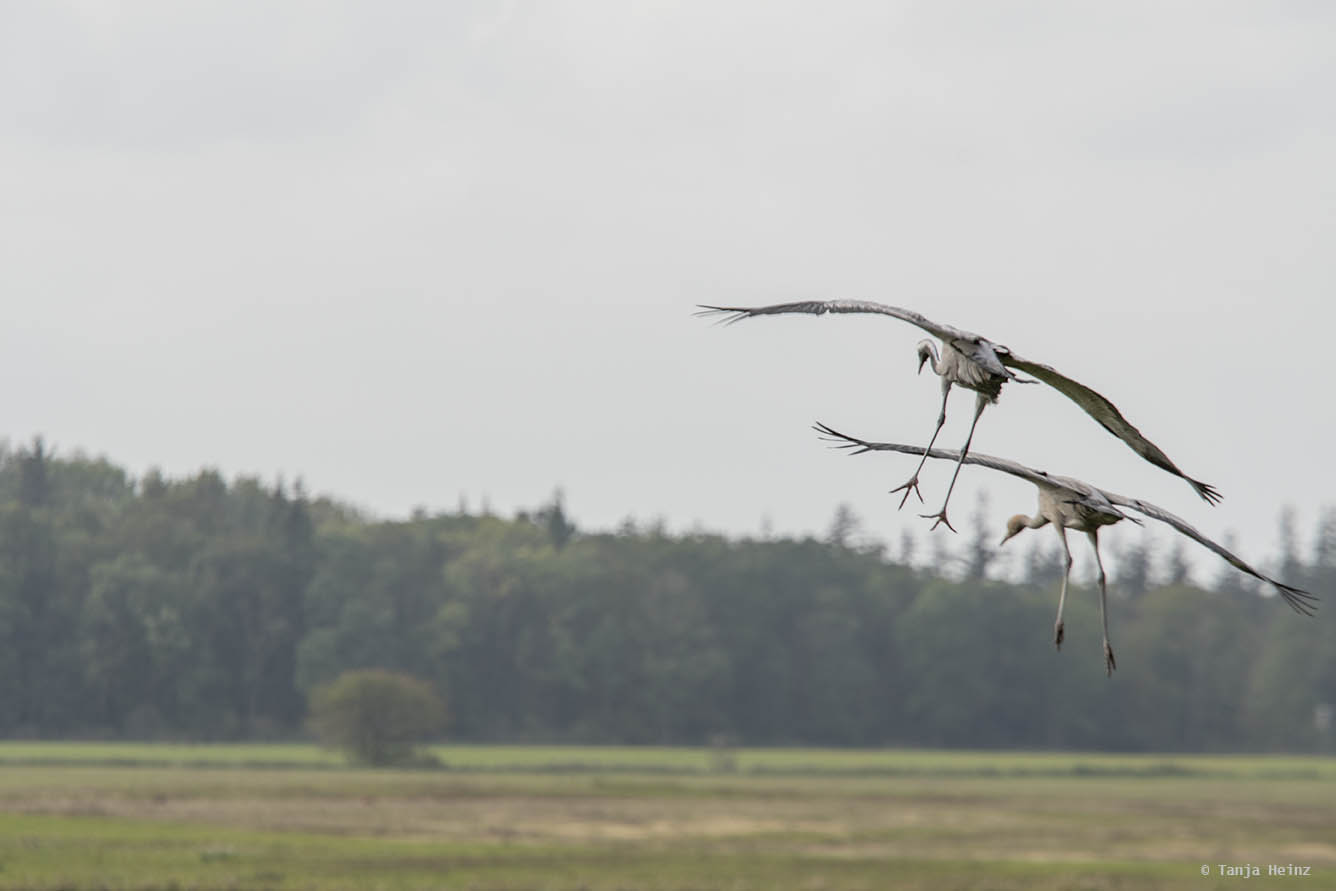
We know already much about these birds, but to improve their conservation it is necessary to collect continuously data about their flight paths, positions or overwintering sites.
For example, we know already that the year of the common crane can be divided into four stages. The spring migration, reproduction and rearing of the young in their breeding grounds, autumn migration and wintering. As common cranes wouldn’t find enough food in the cold and snowy north, they usually spend winters in the south (although there are exceptions). However, they fly back to the north, as in the south in their overwintering sites they wouldn't find suitable wetland areas for breeding or enough food for their young.

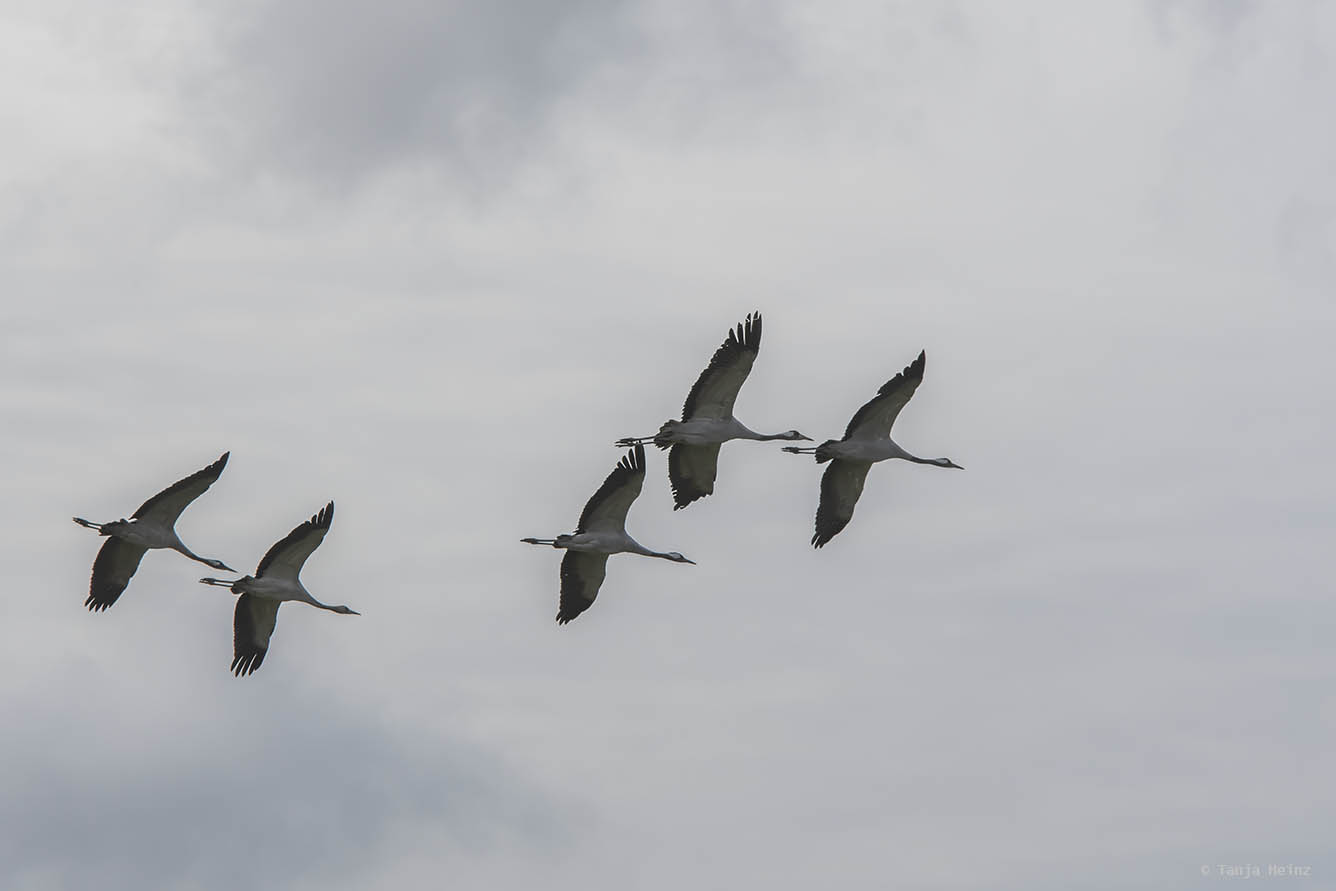
There are three migration paths of common cranes through Europe. The West European Flyway, the Baltic-Hungarian Flyway, and the East European Flyway. Common cranes that stop in North Germany follow the West European Flyway.

At the Kranorama common cranes were continuously moving.
Some flew in.

And some were picking through the grass of the meadow.
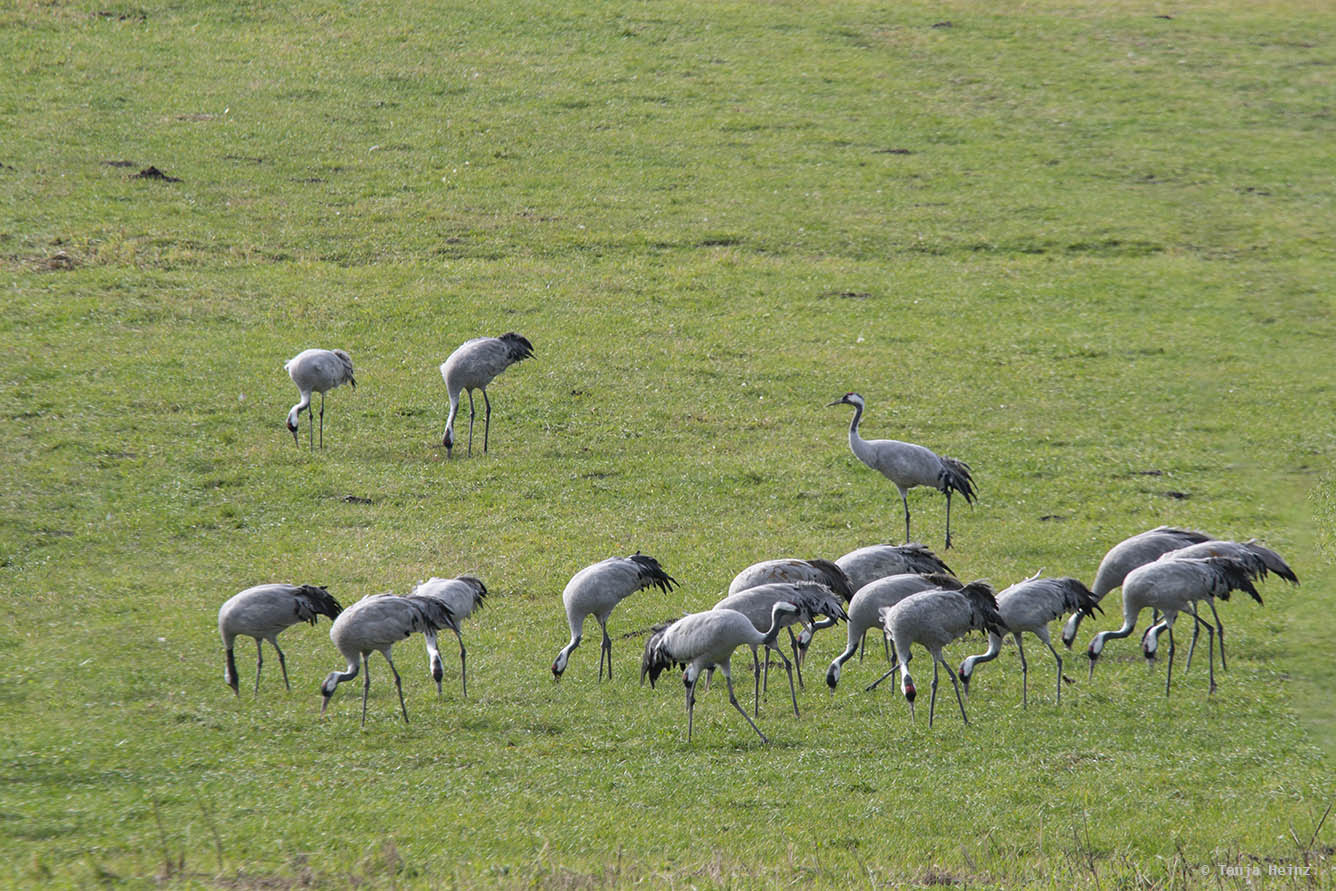
It was definitely not easy to take photographs of these birds. Either they were in flight (and thus, moving very fast) or they were too far away.

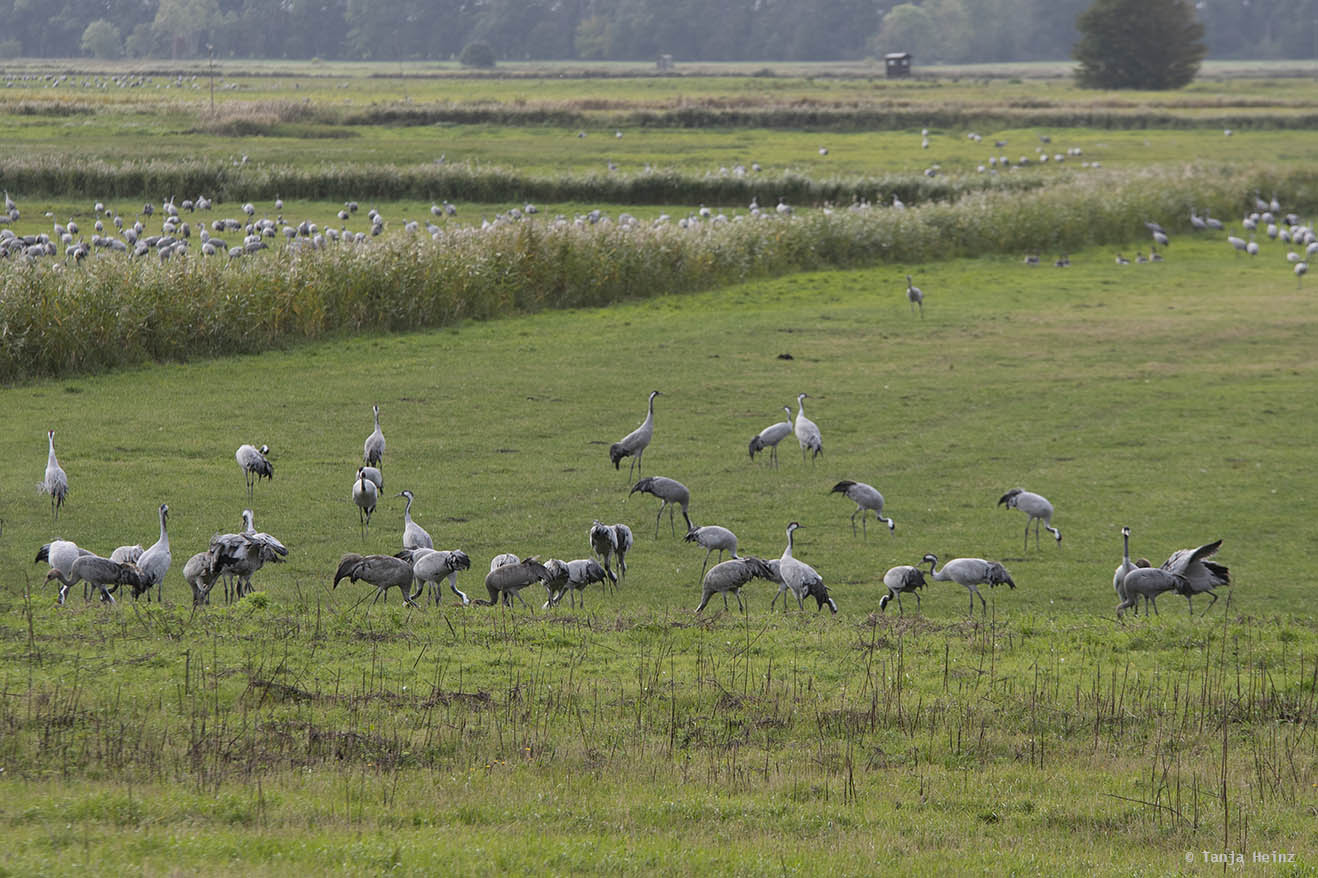
On the day of my visit it was quite busy in the Kranorama. I saw some keen wildlife photographers taking photographs with their cameras and big lenses.
Apropos lenses.
If you want to take some nice photographs, I highly recommend lenses with more than 200 mm focal length (although 200 mm focal length is actually already too short).
I used a Nikon D500 (crop factor 1,5) and a 70-200 lens. In some photographs I additionally used a 2-fold converter.
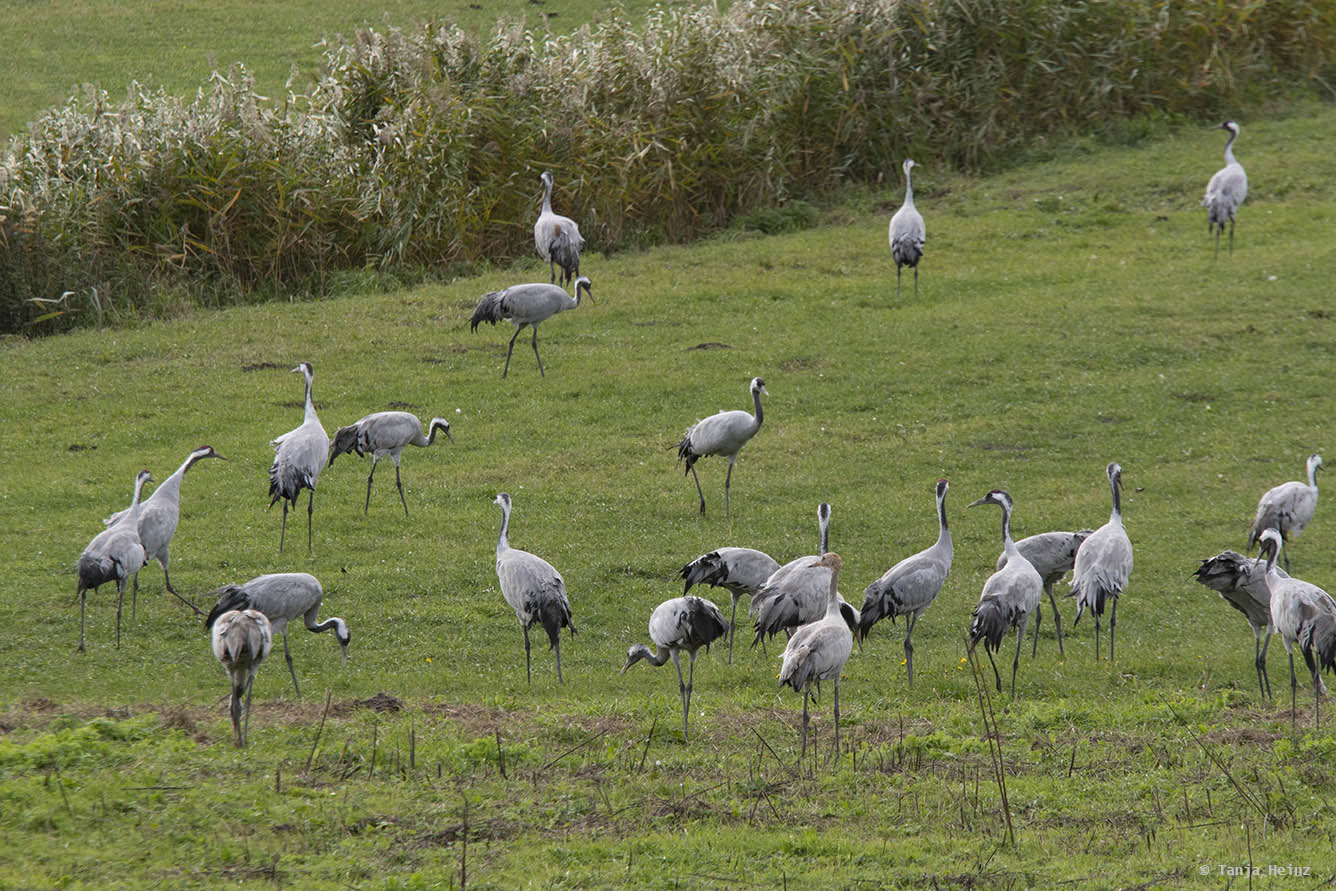

This is actually not the equipment I would recommend for bird photography. However, as this is my equipment and bird photography is so far not my metier, the photographs here are the photographs I got with this equipment (but the Nikon D500 is great for wildlife photography).
If you want to be very close to the cranes, there is the possibility to book a photo hide at the lake Günzer See.
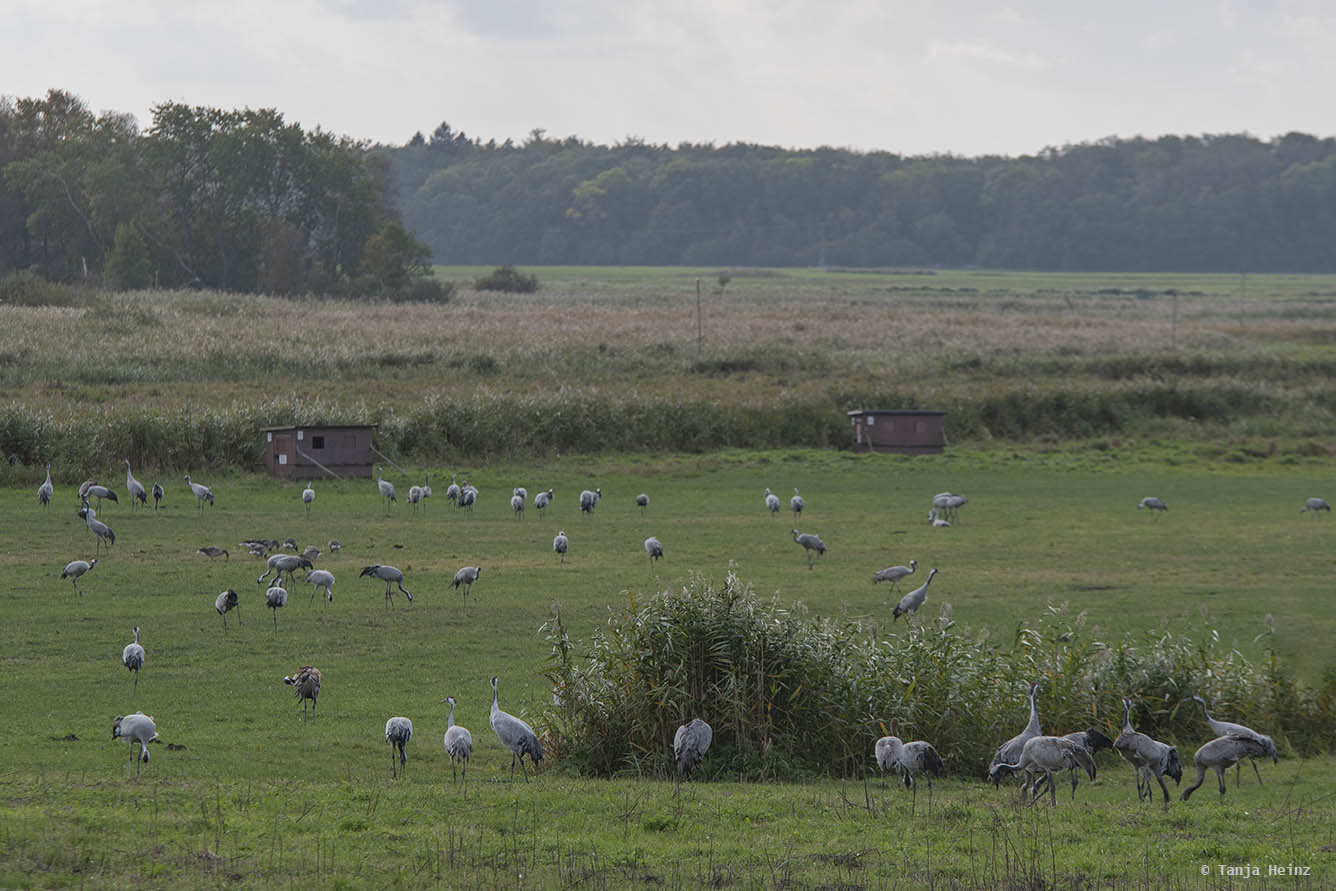
I haven’t been in any of these photo hides, thus, I cannot tell you here more about my experiences.
In total, I was happy with the Kranorama as a crane watching platform. It is also a good place to learn more about these birds.
If you are interested in observing common cranes on Fischland-Darß-Zingst or Linum, please visit my previous blog entries. On Rügen and Ummanz I haven’t seen any cranes, but there is also an observation platform where you might see common cranes.
Practical information
How to get to the Kranorama
As we stayed in Stralsund, we cycled from Stralsund to the Kranorama (Kranorama, 18445 Altenpleen). It took us about one hour and a half. We left the city in the north on the street Prohner Straße. We turned left to pass Schmedshagen, Preetz, and Altenpleen. At one fork in the road after Altenpleen on the street Stralsunder Straße, we turned left. The Kranorama is located on the right just after Günz. If you turn right at the fork in the road you will drive into the direction of Groß Mohrdorf. In this village you can visit the NABU Crane Center (Lindenstraße 27, 18445 Groß Mohrdorf).
On most roads there are cycle paths and actually it is not very hilly. However, as it was such a windy day it was physically more demanding as it would have been without so much wind. From Stralsund to the Kranorama you have to drive more or less 20 kilometers.
Bike rental in Stralsund
We rented a bike at Fahrradverleih Heiden. The shop is located in the street Tribseer Straße 7, 18439 Stralsund. We were happy with the bikes and we paid 10 Euros per bike and per person for one day.
More information about the Kranorama and cranes
Official website of the Kranorama and Crane Conservation Germany
Previous blog entries:
Fischland-Darß-Zingst – Crane observations at the Baltic Sea
Linum – Crane observations in Brandenburg
Beech forests and cranes on Rügen and Ummanz
Have you already been at the Kranorama? Or have you seen common cranes elsewhere? Please let me know in the comments.
